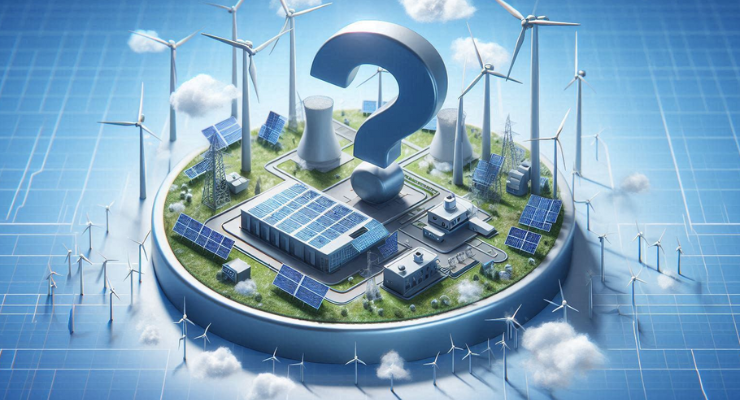Fast read
Virtual Power Plants (VPPs) are transforming Australia's energy landscape by connecting decentralized power sources like solar panels, wind turbines, and home batteries into a unified network. These VPPs enhance grid stability, reduce costs, and promote renewable energy use. With over 2.5 million rooftop solar systems and a growing number of home batteries, Australia is an ideal candidate for VPP technology.
High-profile projects like Tesla’s South Australian VPP and ActewAGL’s EV trials showcase VPPs' potential. As the demand for energy storage rises, VPPs are poised to play a crucial role in Australia's sustainable energy future.
What is a Virtual Power Plant? Exploring the Future of Energy in Australia
Virtual power plants (VPPs) are revolutionising the energy landscape, particularly in Australia, where rooftop solar and home batteries are becoming increasingly prevalent. But what exactly is a virtual power plant, and why is it gaining popularity? In this article, we will explore virtual power plants, how they work, and why they are becoming more important in Australia.
Understanding Virtual Power Plants
A virtual power plant (VPP) is a collection of smaller power sources such as solar panels and wind farms. It also includes flexible power users and storage systems.
These components are all interconnected. The units are connected and controlled by software to work together like one power plant. The primary goal of a VPP is to enhance power generation, storage, and distribution efficiency.
The Rise of Virtual Power Plants in Australia
Australia has emerged as a global leader in rooftop solar installations, with over 2.5 million systems generating more than 10 GW of power. Alongside this, home battery adoption is growing rapidly, with more than 73,000 systems storing almost 1.1 GW of power. This surge in renewable energy assets makes Australia an ideal candidate for VPP technology.
How Virtual Power Plants Work
Virtual power plants aggregate thousands of individual home batteries and other energy resources to form a cohesive network. This network helps balance the grid by adding renewable energy quickly during disruptions to keep it stable. Here’s a closer look at the process:
- Aggregation: VPPs gather energy from various distributed energy resources (DERs) like solar panels, wind turbines, and home batteries.
- Central Control: A central software system monitors and controls these aggregated resources, optimising their output and ensuring they work in harmony.
- Grid Support: The VPP can provide grid services such as frequency control, voltage regulation, and emergency power supply, enhancing grid reliability.
- Participant Rewards: Households and businesses that participate in VPPs are typically rewarded through direct payments, bill credits, or other incentives.
Benefits of Virtual Power Plants
The adoption of virtual power plants offers several benefits:
Grid Stability: VPPs help keep the grid stable by quickly responding to changes in energy demand.
Cost Efficiency: VPPs lower energy costs by optimising energy use and reducing the need for expensive infrastructure.
Environmental Impact: VPPs support renewable energy, reducing reliance on fossil fuels and cutting greenhouse gas emissions.
Consumer Empowerment: VPP participants can play an active role in the energy market and earn income from their energy resources.

Virtual Power Plants in Action: Australian Examples
Several high-profile projects are showcasing the potential of VPPs in Australia:
Tesla’s South Australian VPP: Funded by the Australian Renewable Energy Agency (ARENA), this project connects thousands of homes with solar and battery systems to create a large-scale VPP. It demonstrates how VPPs can provide critical grid services and support energy stability.
AEMO’s Demonstration: The Australian Energy Market Operator (AEMO) is running demonstration projects to explore how VPPs can enhance grid reliability and energy efficiency.
Beyond Solar Batteries: The Future of Virtual Power Plants
While solar batteries are a key focus, the scope of VPPs extends to various energy assets, including electric vehicles (EVs). For instance, ActewAGL in the Australian Capital Territory (ACT) is trialling the use of EVs to provide frequency control ancillary services (FCAS) to the grid.
The project involves 51 Nissan Leaf EVs with vehicle-to-grid (V2G) capability. These EVs, equipped with 40 kWh batteries, can deliver grid services, provide backup power, and store excess renewable energy, contributing significantly to grid stability.
The Potential of Electric Vehicles in VPPs
The integration of EVs into VPPs is particularly promising. If all 19 million vehicles in Australia were electric, they could store a significant amount of energy. This amount would be equivalent to the energy stored in nine Snowy 2.0 pumped hydro schemes. This highlights the substantial potential of EVs in supporting Australia’s energy grid.
The Road Ahead
EMO says Australia will need 15 GW of energy storage systems by the early 2040s. Virtual power plants (VPPs) will be key as more small energy sources are used. They will help meet growing grid demands.
As more renewable energy sources are added, VPPs will become more important. Better batteries and energy systems will make VPPs more efficient. Using these technologies is necessary for a sustainable future.
Conclusion
Virtual power plants change how we generate, store, and use energy. In Australia, more rooftop solar panels and battery storage are boosting VPP growth.
As technology improves, it will stabilise the grid, cut costs, and give consumers more control. It will also aid the move to sustainable energy.
Virtual power plants show a future where everyone can help build a strong, efficient, and renewable energy grid. This includes people with solar energy, battery systems, electric vehicles, or those who save energy. You can be part of this future, no matter your energy setup or interests.



